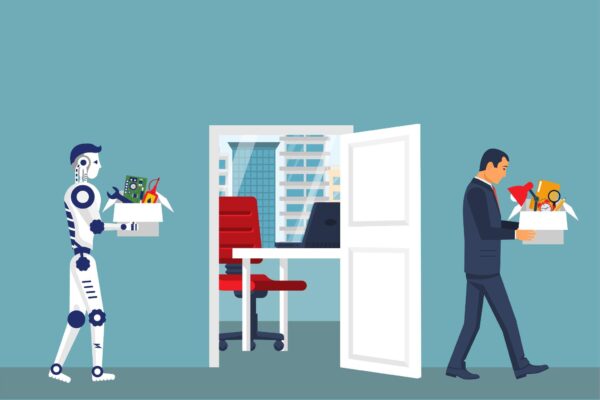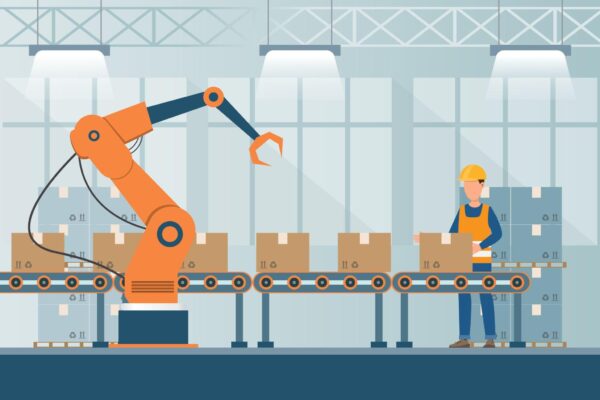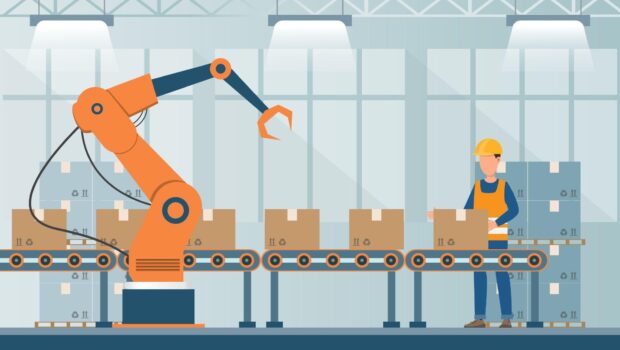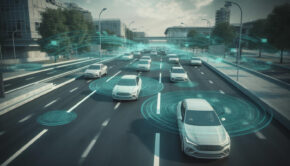How Will AI Affect the Human Workforce?
By now, most members of the workforce recognize that AI is not the sentient threat to the human way of life that is commonly depicted in science fiction; rather, AI is becoming more well-known as a helpful tool for accomplishing specific tasks in various industries. Workers in fields like health care and cybersecurity are leveraging artificial intelligence to improve efficiency, reduce errors, understand data and generally better serve their clients.
Yet, AI is a relatively new technology, and as adoption of AI expands, it is possible that this tool will impact how organizations hire and retain human talent. Do human workers have anything to fear from the oncoming AI revolution?

The simple answer is no, and here’s why.
Our Current AI Is Narrow and Weak
Professionals who enroll in artificial intelligence courses will encounter three classifications for AI: artificial narrow intelligence (ANI), artificial general intelligence (AGI) and artificial super intelligence (ASI). These classifications help AI experts communicate about AI tools of differing complexity — but only ANI actually exists in the world today, and ANI is the only AI expected to exist for our lifetimes.
ANI, also called “weak” AI, is an AI tool that is given a specific data set and programmed to complete a specific task. ANIs always operate within their pre-defined, predetermined range, though some are sophisticated enough to appear to have more capability than they actually do. AlphaZero, an AI program designed to master the game of chess, is an obvious example of narrow AI because it cannot perform any tasks aside from playing chess. AI virtual assistants like Siri and Alexa seem to have more varied functionality, but in truth they adhere to a single task: searching their database (or a web search engine) for answers to users’ queries.
Though “narrow” and “weak” might sound disparaging, there are undeniable benefits to this level of AI. Most AI applications do not require advanced intelligence; rather, they benefit from the faster processing speeds provided by computers. ANI is relatively quick, easy and inexpensive to develop, meaning more organizations and individuals have access to this enviable technology. Far from being replaced, human workers find that AI tools improve their productivity and efficiency, which in turn improves their quality of life. Though narrow, weak AI might not be the AI envisioned in the science fiction future, it is incredibly important to the development of our present reality.

Few Jobs Can Be Fully Replaced by AI
Because ANI cannot mimic human intelligence, there are many aspects of human thought and behavior that our current AI tools are essentially incapable of. Creativity and abstract thought, emotional intelligence, strategic thought and problem-solving — these are skills that most human workers need to excel in their jobs, and they are skills that our current AI solutions cannot and will never manifest.
There are but a small handful of jobs that do not utilize skills that ANIs cannot replicate. Only those jobs that involve only monotonous tasks, in which stimuli change rarely and predictably and there is a high level of repetition, are at risk of full AI replacement. For the most part, these jobs are not desirable to human workers anyway, as they present little challenge and few opportunities for growth. Some examples of jobs that have seen a decline due to AI include:
- Production and assembly-line work
- Stockroom and warehouse organization
- Call center operations
- Retail checkout positions
- Document classification, discovery and retrieval
Despite scary headlines indicating that AI is coming for every available position, the truth is that the current limitations of ANI make it incredibly unlikely that anyone’s job will be fully replaced by tech. Instead, most businesses integrate AI by altering the responsibilities of their human staff.
Complex AI Might Not Emerge in Our Lifetimes
ANI is unlikely to take human jobs, but what about AGI and ASI? General, or “strong,” AI exactly replicates human intelligence, and superintelligence goes beyond human cognitive capabilities in every respect. Thus, both AGI and ASI could replace human workers — if they ever come to exist. Open-minded and optimistic estimates of the evolution of AI suggest that the first AGI could emerge in the 2050s, and with the help of AGI, we could develop ASI soon after that. However, there is no telling when (if ever) AGI and ASI solutions will be available to businesses and how AGI and ASI consciousnesses will react to their roles in the workforce.
One of the reasons today’s workforce might fear the AI revolution is that they are unprepared to work with emerging AI tools. Becoming educated on AI trends and gaining knowledge and skill about the technology will help professionals gain greater comfort in an increasingly AI-filled world.
















